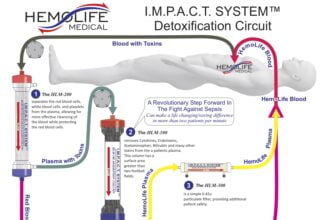 On August 6, 2013, FDA published modifications to the list of medical device related standards they recognize.
On August 6, 2013, FDA published modifications to the list of medical device related standards they recognize.
 On August 6, 2013, FDA published modifications to the list of medical device related standards they recognize. News was made of the fact that additions to the recognized standards addressed areas such as cybersecurity and interoperability. While there were many revisions and some additions of a variety of standards, this blog post will focus on the news making standards related to medical device connectivity.
On August 6, 2013, FDA published modifications to the list of medical device related standards they recognize. News was made of the fact that additions to the recognized standards addressed areas such as cybersecurity and interoperability. While there were many revisions and some additions of a variety of standards, this blog post will focus on the news making standards related to medical device connectivity.
The published modifications are divided between two separate recognition lists, number 31 (pdf) and 32 (pdf). Here is the Federal Register version (PDF). Recognition list number 31 includes one standard under the Software/Informatics category: Laboratory Automation: Data Content for Specimen Identification; Approved Standard (NCCLS AUTO-7A). The 20+ standards listed in recognition list number 32 are all new additions under Software/Informatics and focus on the following topics:
- IT governance in hospitals for networked medical devices,
- Medical device connectivity and interoperability, and
- Cybersecurity
These are all great standards (although they are of varying relevance and usefulness). So where is the confusion, you might ask?
Reading the stories linked above, this reader was left with the impression that FDA is encouraging or stipulating the use these standards and that by listing these standards, manufacturers can be expected to adopt the new listed standards. Sadly, this is not the case.
The intent of listing recognized standards (found in the FDA guidance on the Recognition and Use of Consensus Standards) is to “simplify and streamline” the premarket review process. Some standards, such as Standard Guide for Interpreting Images of Polymeric Tissue Scaffolds…
[…] are often very useful when an FDA-recognized consensus standard exists that serves as a complete performance standard for a specific medical device. In these cases, the standard may include specific acceptance criteria that describe the relevant performance characteristics of that specific medical device. Conformity to the recognized standard should, in these cases, minimize the amount of data and documentation needed in the 510(k) submission to demonstrate substantial equivalence.
Such standards are a great boon if your medical device matches the standard, for example using polymeric tissue scaffolds. Unfortunately, there are relatively few comprehensive standards of this type. Most often, more general standards are used that do not encompass all aspects of device performance. In these cases, you cover what you can with the standard and provide what you judge to be sufficient objective evidence to justify the parts of your submission that are not covered by the standard.
If applied appropriately, conformance to other more general vertical standards (i.e., device specific standards that may not encompass all aspects of device performance) can also serve as a means to streamline the premarket review process. Conformance and declarations of conformance to any recognized consensus standard that clearly spells out acceptance criteria is a very effective use of standards in the premarket process. Used this way, conformity to FDA recognized consensus standards will reduce the amount of documentation that you need to submit and may allow FDA to reduce review time.
A common area of contention with premarket submissions to FDA is how good is good enough. Is your risk management process, and resulting objective evidence, sufficient? Is your method for determining the biocompatibility of your sensor adhesive sufficiently rigorous? These kinds of questions come up frequently in premarket submissions. Following and referencing appropriate standards accepted by FDA can remove that uncertainty.
What the guidance document doesn’t really get into are the various ways standards are used in medical devices and/or submissions. Standards can be used:
- in a device’s product features to establish how a capability is implemented,
- in a device’s specifications to communicate performance metrics and to use as a benchmark,
- in processes to describe how something was accomplished, and
- in testing criteria to demonstrate achievement of accepted performance, safety or effectiveness.
It is important to note that the use of any of the FDA recognized standards is purely voluntary on the part of the manufacturer. Perhaps a new product does not conform to a recognized standard because a novel approach was taken in an effort to develop a superior product. Such innovation be definition precedes the development of consensus standards. Or perhaps your human and physical resources are such that you arrived at your desired objective in a way that does not conform to the standard other manufacturers may have used. When established standards are not used, the onus is on the manufacturer to provide sufficient objective or scientific evidence that what was used was at least as safe and effective as the outcome of using the applicable standard.
There’s much more about the use of standards in regulated medical devices in the guidance. Important issues in the guidance include how to go about selecting which standards you want to use and the information to be included in a declaration of conformity. FDA even has a database where you can search for specific standards.
Also, be sure to visit the CDRH Standards Program web page.








